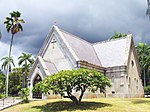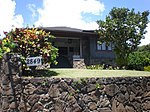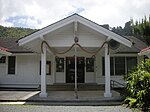Consulate General of the Philippines, Honolulu
Diplomatic missions in HonoluluDiplomatic missions of the PhilippinesFilipino-American culture in HawaiiUse Philippine English from October 2022Use mdy dates from January 2023

The Consulate General of the Philippines in Honolulu is a diplomatic mission of the Republic of the Philippines in the United States, representing the country's interests in Hawaii. Opened in 1946, it is located along Hawaii Route 61 (the Pali Highway) in the Nuʻuanu neighborhood of northern Honolulu, next to the campus of the Hawaii Baptist Academy.
Excerpt from the Wikipedia article Consulate General of the Philippines, Honolulu (License: CC BY-SA 3.0, Authors, Images).Consulate General of the Philippines, Honolulu
Pali Highway, Honolulu Nuuanu
Geographical coordinates (GPS) Address Phone number Website Nearby Places Show on map
Geographical coordinates (GPS)
| Latitude | Longitude |
|---|---|
| N 21.328333333333 ° | E -157.84516666667 ° |
Address
Consulate General of the Philippines
Pali Highway 2433
96817 Honolulu, Nuuanu
Hawaii, United States
Open on Google Maps







